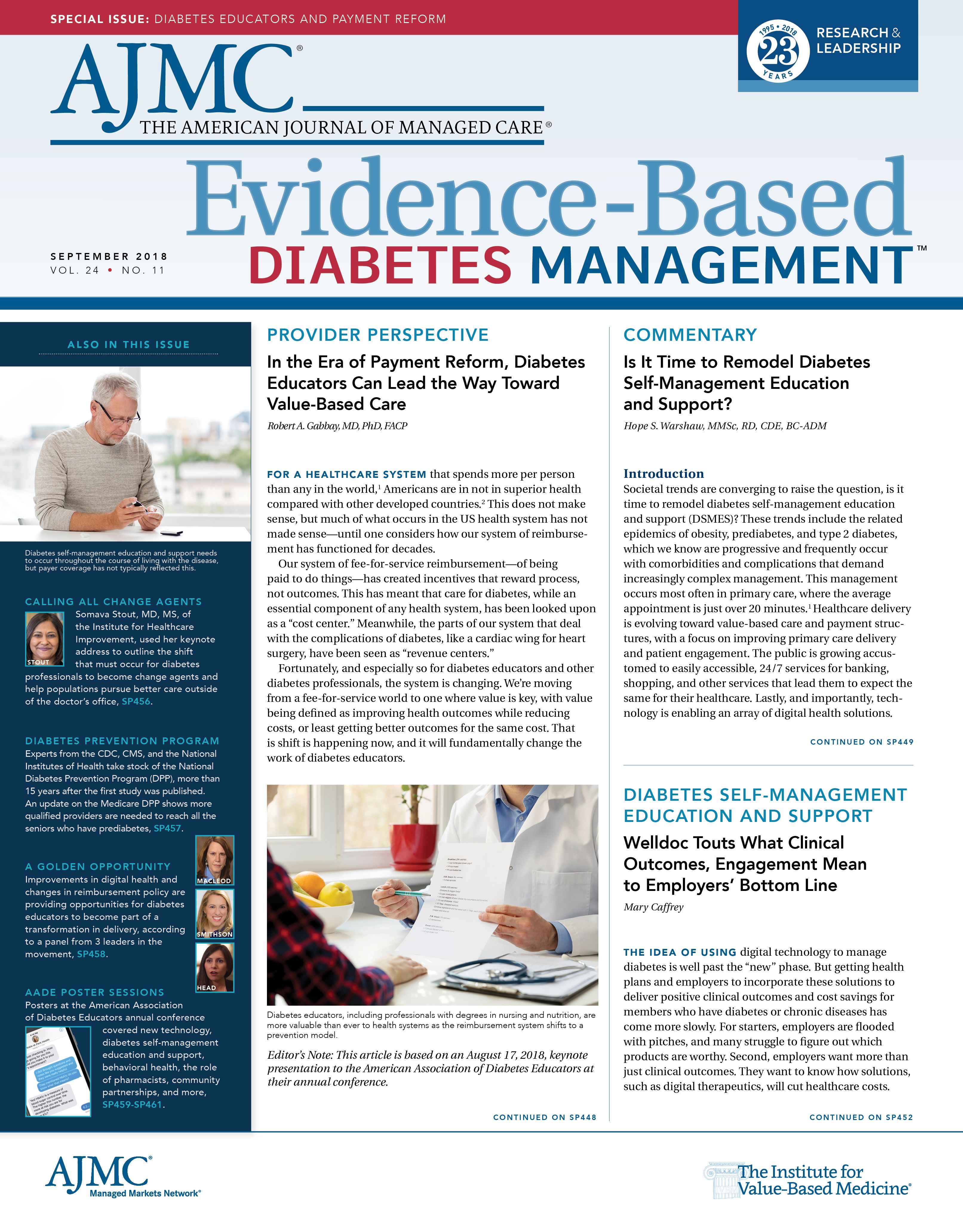- Center on Health Equity & Access
- Clinical
- Health Care Cost
- Health Care Delivery
- Insurance
- Policy
- Technology
- Value-Based Care
From the Editor-in-Chief: Technology Is a Great Tool, but the Team Makes the Difference
A letter from our Editor-in-Chief, Robert Gabbay, MD, PhD, FACP.
The diabetes technology landscape is so vast and diverse that it can be difficult to keep track of all the developments. From devices that monitor blood glucose to those that partially automate insulin delivery, to therapeutic apps that allow 2-way communication with a health coach, it seems there’s something new every week.
For all the promise of technology in diabetes care, however, we are learning that while devices and apps can assist the doctor, the nurse, or the educator, personal contact cannot be completely replaced. Studies are showing that the best diabetes tools have a human element—especially those that connect people with diabetes to their healthcare team.
A comprehensive look at technology-enabled diabetes self-management education and support (DSMES) appeared last year in the Journal of Diabetes Science and Technology; 18 of 25 studies reported significant reduction in glycated hemoglobin (A1C) as an outcome measure.1This systematic review identified 4 characteristics for technology interventions to improve A1C: (1) communi- cation, (2) patient-generated health data, (3) education, and (4) feedback.
In other words, the technology itself wouldn’t help people with diabetes unless they did something meaningful with it, and that typically involved a clinician or health coach who could offer additional support to keep people engaged and motivated to maintain changes in nutrition, exercise, medication, or stress reduction.
The review concluded, “The most effective interventions incorporated all the components of a technology-enabled self-management feedback loop that connected people with diabetes and their healthcare team using 2-way communication, analyzed patient generated health data, tailored education, and individualized feedback.”
Technology, for all its possibilities, is unlikely to ever fully replace the role of the team in diabetes care. Technology can give us new ways to gather data and analyze data; it can help us identify those people living with diabetes who are missing appointments or not picking up their medication. But as the systematic review found, the difference comes when information fuels action. In the future, many elements of diabetes education will be technology-enabled, but for now, ongoing support
must still come from trained team members, who can offer evidence-based input on changes to a diet and exercise regimen, as well as words of encouragement when the grind of managing the disease becomes overwhelming. Those offering support should be connected to the primary care physician and specialists, so that day-to-day disease management aligns with clinical needs as a seemless team.
Last spring, the American Diabetes Association reported that cost of diabetes in this country is now more than $327 billion a year, a 26% jump from the amount reported just 5 years ago.2 Of this amount, $237 billion is for direct medical costs, and 60% stems from hospitalization and complications, including prescription drugs. If we are to see these numbers level off, we must put more resources into the “support” part of the equation, where we get more value for the dollar. That means our healthcare system must invest in connecting people with diabetes with people who are experts in offering this support.
In this issue, Hope Warshaw, a former president of the American Association of Diabetes Educators, writes that payers are starting to make this transition, in part due to changing incentives under Medicare. Notably, she points out that remote monitoring of patients is considered an improvement activity that will allow practices to increase their scores under the Merit-based Incentive Payment System, or MIPS. But Medicare must go further and increase the number of hours a person can receive diabetes education each year; a bill in Congress calls for this.3
Of course, we must not overlook the most important member of the team: the person with diabetes. Whether they include technology, in-person support, or some of each, the best solutions empower patients to take ownership of their own care, and our reimbursement system must facilitate this and match it.
Author Information
Robert A. Gabbay, MD, PhD, FACP, is senior vice president and chief medical officer at Joslin Diabetes Center.References
- Greenwood DA, Gee M, Fatkin FJ, Peeples MA. Systematic review of reviews. Evaluating technology-enabled diabetes self-management education and support. J Diabetes Sci Technol. 2017;11(5):1015-1027. doi: 10.1177/1932296817713506.
- American Diabetes Association. Economic costs of diabetes in the US in 2017. Diabetes Care. 2018;41(5):917-925. doi: 10.2337/dci18-0007.
- S.3366/HR.5768. Expanding Access to DSMT Act of 2018. 115th Congress, 2nd sess.

Trends in Hospital Pricing for Vulnerable Emergency Department Users, 2021-2023
December 4th 2025Self-pay emergency department prices rose significantly from 2021 to 2023, especially at for-profit and system-affiliated hospitals, highlighting growing affordability challenges for uninsured and underinsured patients.
Read More
Exploring Pharmaceutical Innovations, Trust, and Access With CVS Health's CMO
July 11th 2024On this episode of Managed Care Cast, we're talking with the chief medical officer of CVS Health about recent pharmaceutical innovations, patient-provider relationships, and strategies to reduce drug costs.
Listen
Integrated Care for Chronic Conditions: A Randomized Care Management Trial
December 3rd 2025The authors sought to understand the differential impact of payer-led community-based care management approaches on stakeholder-oriented outcomes for publicly insured adults with multiple chronic conditions.
Read More

